Good finishing techniques will make a slab look great for a while, but proper ground prep will keep it looking that way over its lifetime.
How Proper Prep Leads to Crack-Free Concrete
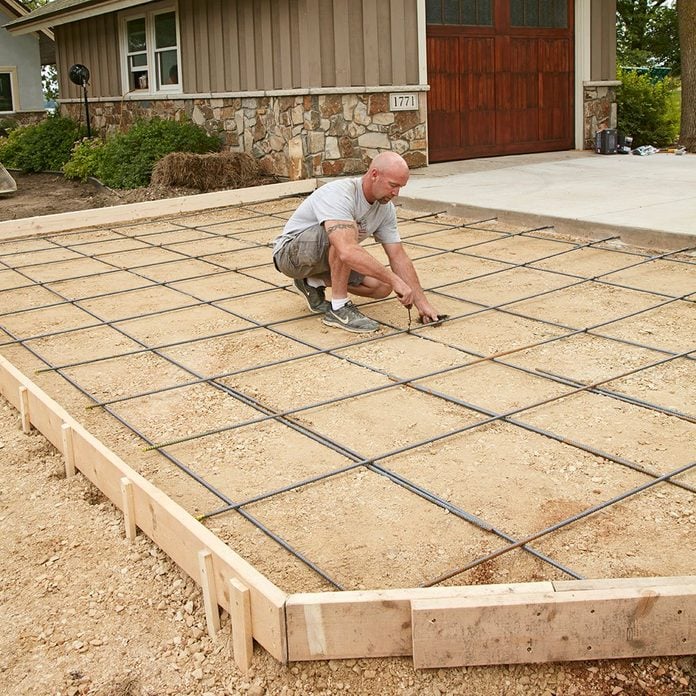
Prep for Crack-Free Concrete
A concrete driveway should last for decades if it’s properly installed. Good finishing techniques will make a slab look great for a while, but proper ground prep will keep your concrete crack-free for years. Here are some great tips on how to prepare the site for a pour.
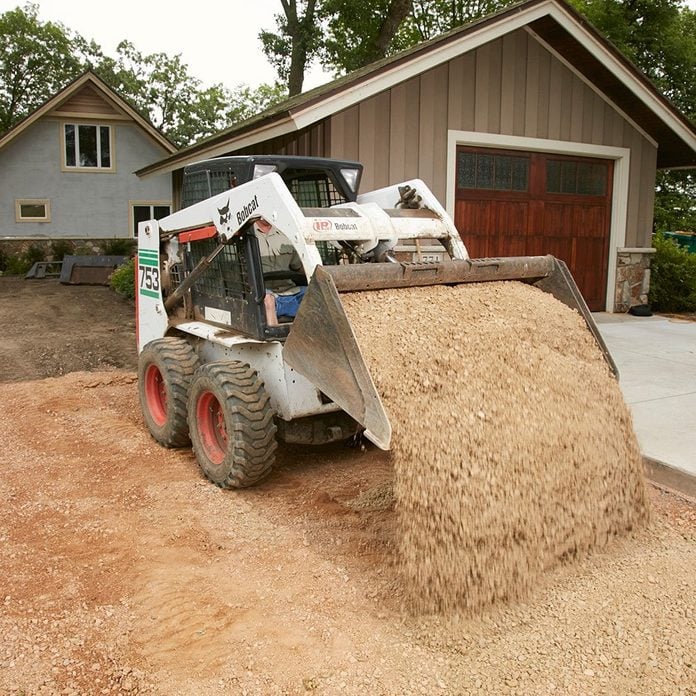
A Good Base Is Everything!
Concrete will crack and crumble if it’s not poured over a solid, stable base. Bringing in 4 to 6-in. of a good compact-able base is a good rule of thumb, but the exact amount of base a concrete driveway needs depends on the condition of the existing soil, the climate, and what you plan to park on your driveway.
You may be able to pour directly over sandy or gravelly soil without bringing in any additional base. But if you live in a cold climate, are pouring over heavy clay or organic soil, or plan to park heavy vehicles on the driveway, you may want to increase the base layer to 10 or 12-in.
The best way to find out how much base you need is to contact the nearest concrete supplier. If you explain your soil conditions and the slab’s intended use, the supplier should be able to recommend the proper base depth and the type to use and provide contact info for a nearby base supplier. Your municipality may also have a handout of recommended base depths in your area.
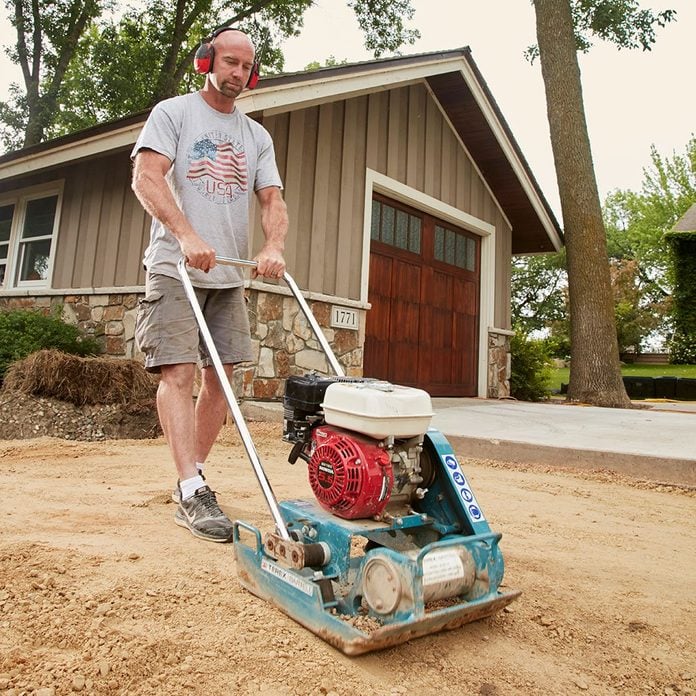
Compact Each Layer of Base
Make three or four passes with a plate compactor every time you add 2-in. of base, or “lift” (each layer you add is called a lift). Use a vibrating plate compactor like this one instead of the type that jumps up and down, sometimes referred to as a “rammer” or “jumping jack.” Those are designed for compacting soil when backfilling trenches, not for compacting base.

Dampen the Base
Super-dry base doesn’t compact well. So if you’re preparing the base layer in dry conditions, add a little moisture by spraying down each “lift” with a garden hose to achieve maximum compaction. Check to see if your base material has enough moisture by grabbing a handful and compressing it into a ball. If it holds its shape, you’re good to go. Add water if it completely crumbles. Oversaturated base won’t compact either, so don’t spray so much water that it starts pooling. Adding water to every lift also helps keep the dust down.
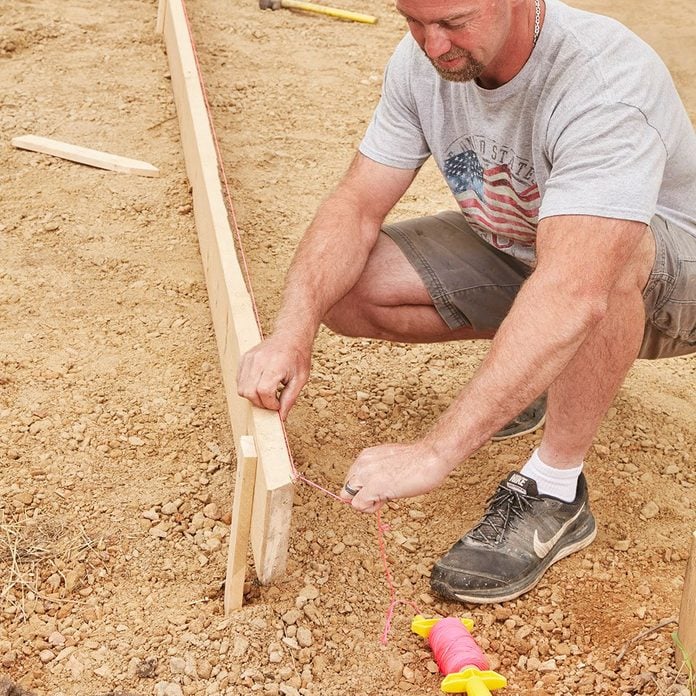
Keep Forms Straight
Stretch a string between two screws installed at the edge of both ends of the form boards. The string will act as a guide to keep the form boards straight. Set the forms at the proper height before bringing in the last lift. That way you can use the forms themselves as a guide for the final base height.
Every concrete slab should have a minimum slope of 1/8-in. per foot to keep water from pooling. If the proper slope can’t be met down to the curb, angle the slab to one side or the other so the water runs off in the same direction as the natural grade of the yard.
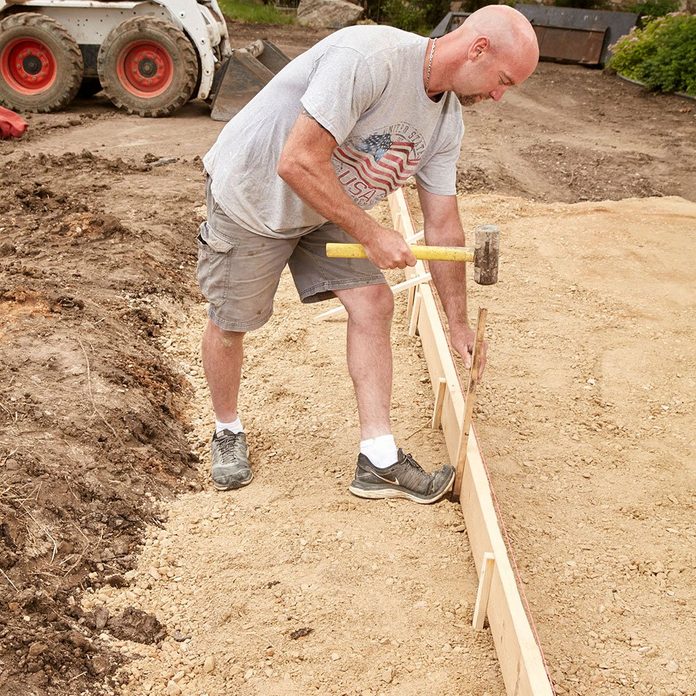
Secure the Forms
Place a stake at least every 3-ft. Use your foot to align the form board to the string as you drive each stake. Try to drive the stakes in straight and flush with the board so the form doesn’t get pulled out of alignment when you fasten it. Scab a board onto the splice if more than one board is needed on a side of the form. Backfilling dirt against the forms before you pour will also help keep them in place.
Used motor oil works as a good release agent to prevent the concrete from sticking to the form boards. But don’t coat boards used to form steps or other surfaces that will be visible after the pour, because the oil could stain the surface and prevent the sealer from sticking.
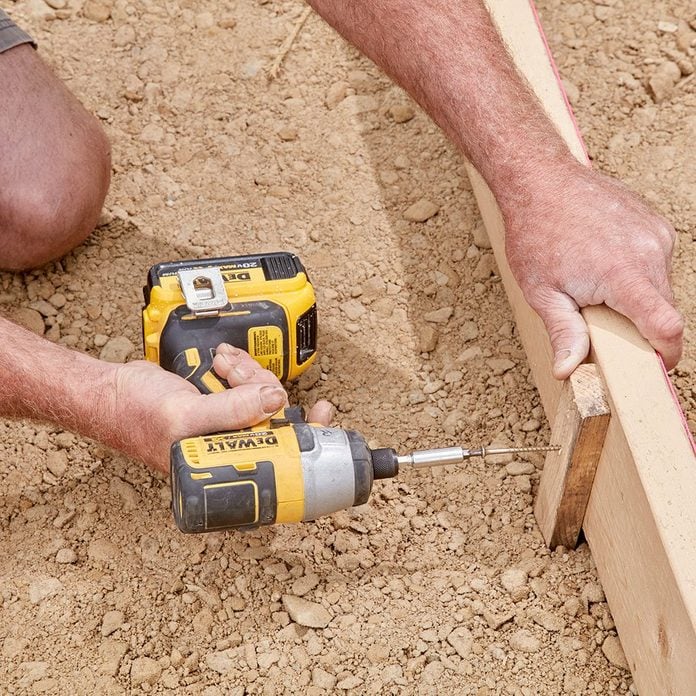
Screw the Stakes
Secure the stakes to the form boards with screws instead of nails (Torx-head screws work well). Pounding in nails can loosen stakes and knock everything out of alignment. Don’t install the screws too low or they’ll be tough to remove if the forms are backfilled. It’s OK if screws protrude into the pour area if the edge of the concrete won’t be visible; they’ll easily spin right out, and the small hole won’t be a problem.
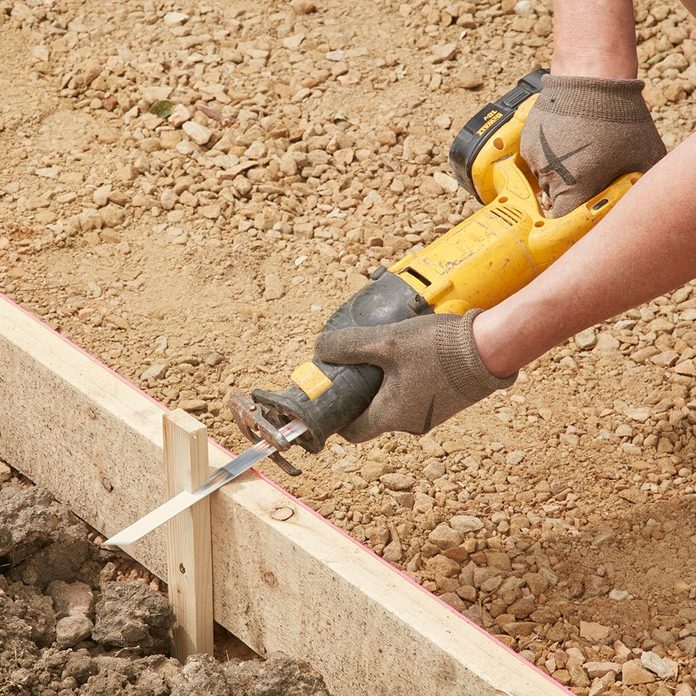
Cut Stakes Flush
Cut the stakes off flush with the top of the form boards so they won’t get in the way of screeding when it’s time to pour. A reciprocating saw can rattle a form out of alignment. If you do use one, wait until all the stakes are in, and don’t use a super-aggressive blade. Also, make sure to knock down the grade near the forms so it won’t interfere with the screed board.
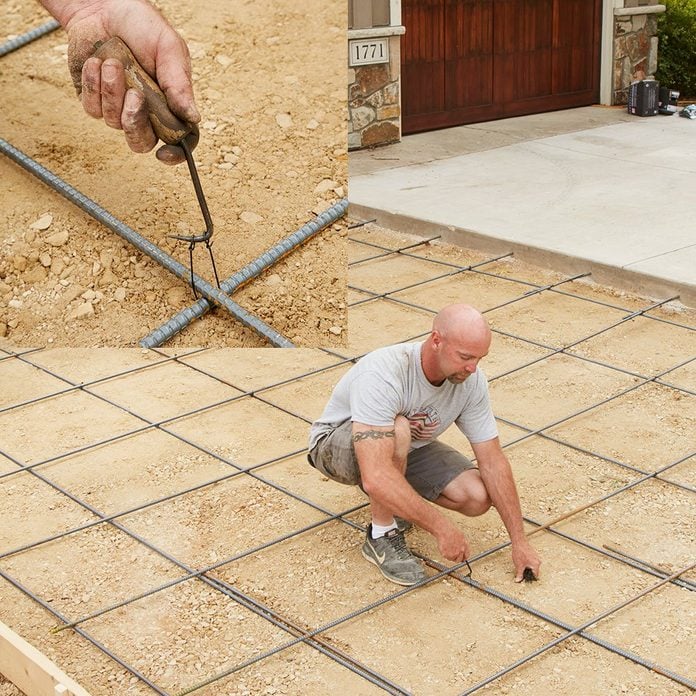
Reinforce With Rebar
Our expert prefers to install 1/2-in. rebar in a 2-ft. grid pattern when pouring driveways. He ties the rebar together with precut rebar ties fastened with a tie-wire twister. Use enough ties so the grid will stay together if it’s accidentally stepped on while suspended in the air.
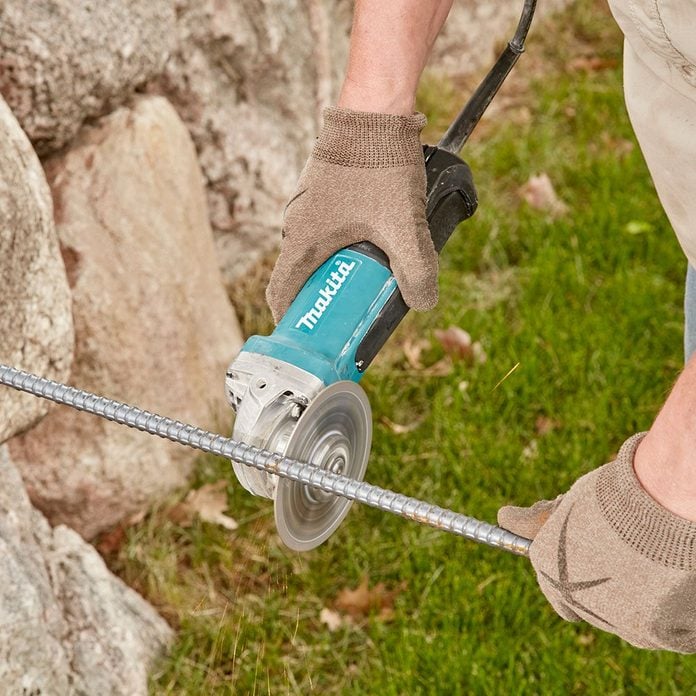
Cut Rebar With a Grinder
A grinder fitted with an abrasive metal-cutting blade is a good setup to cut rebar. A lot of contractors swear by the $15 diamond masonry blades even though they’re not specifically approved for metal. While you’re at it, learn about concrete grinding.
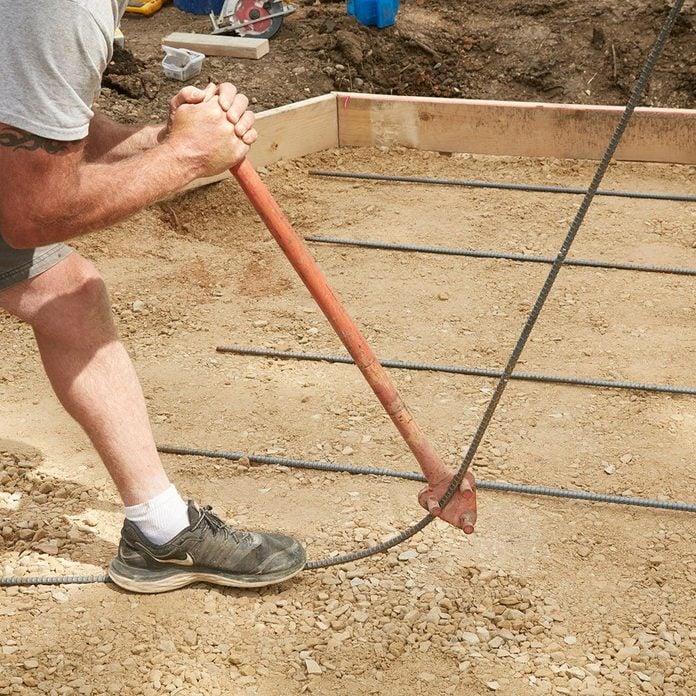
Bend Rebar Around Corners
Rebar can be easily bent with this simple rebar bender. If you have only a few bends to make, standing on the rebar and pulling it up into shape works for rebar 1/2-in. and smaller.
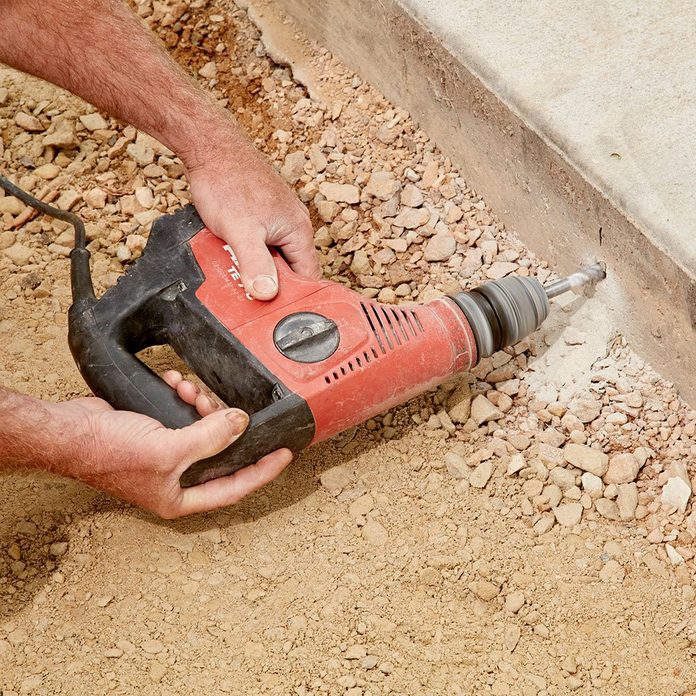
Tie Into the Existing Slabs
When you’re joining two concrete slabs, connect the two with rebar to keep them at the same height. Drill the holes as deep as you can (the entire length of the bit) so the rebar fits snugly into the holes. Insert chunks of rebar and tie them into the grid.
If you’re working in a cold climate, never tie a floating slab into a house or any structure that’s resting on footings. The slab will likely be pushed up by the frost, but the house will not. This will almost certainly result in cracks where the two are connected.
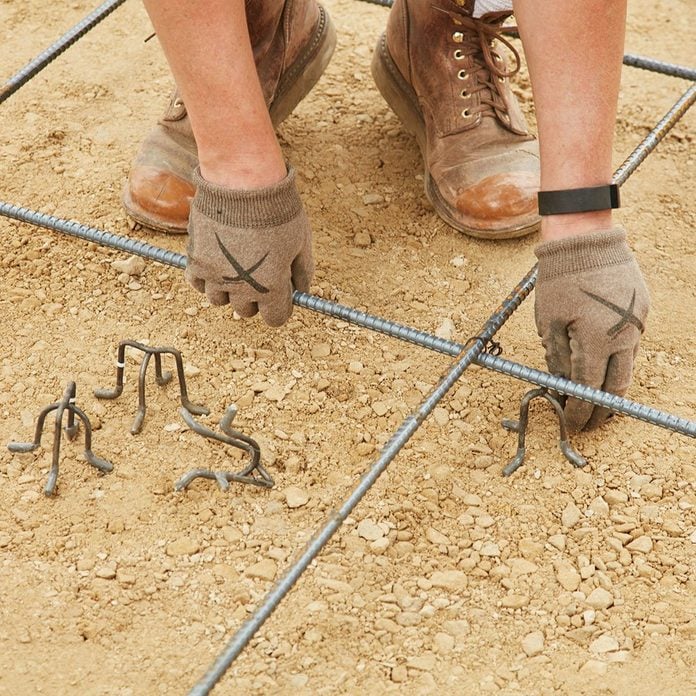
Set Rebar on Chairs
Rebar that’s lying on the ground does no good whatsoever. Placing the rebar grid on chairs will ensure it stays centered in the slab. Chairs come in different sizes so the height can be customized to the thickness of your slab. Space the chairs so the rebar sits level. Raised rebar is the mother of all trip hazards, so move slowly and deliberately when walking through the grid.
You won’t be able to use chairs if you need to roll a wheelbarrow over the rebar to distribute the concrete. If that’s the case, lay the rebar on the ground and pull it up into the center of the concrete as you pour. Concrete placers/rakes have hooks on them designed to do just that. Chairs are the best way to guarantee that the rebar is centered, so use them when you can.